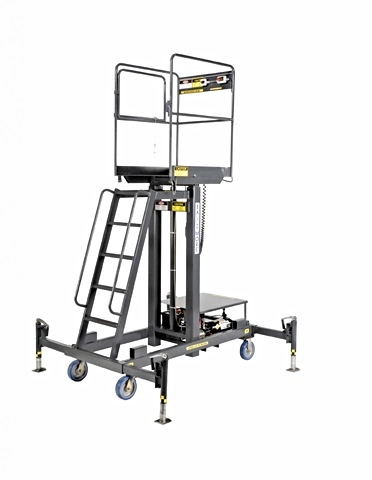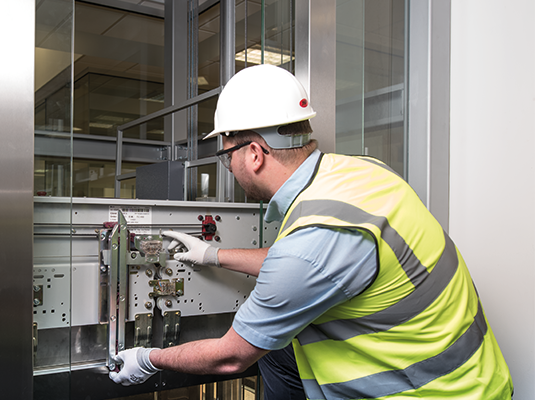Lift Maintenance Repair: Important Services for Optimal Lift Efficiency
Lift Maintenance Repair: Important Services for Optimal Lift Efficiency
Blog Article
Pro Tips for Keeping Your Lift in Top Condition: A Comprehensive Summary
Making sure the optimal performance of a lift system is necessary for a effective and safe operation in numerous setups, from commercial storage facilities to industrial buildings. By sticking to a structured upkeep regimen and preemptively addressing prospective issues, lift owners can minimize expensive downtime and safety dangers.

Significance of Regular Maintenance
Normal upkeep of your lift is critical to guarantee its ideal efficiency and longevity. By adhering to a routine upkeep routine, you can identify and deal with possible issues before they escalate into pricey repair work or unexpected downtime. Routine upkeep tasks such as lubricating relocating parts, inspecting for deterioration, and examining hydraulic systems can help prevent breakdowns and make certain safe operation.
Ignoring normal maintenance not only endangers the performance of your lift yet additionally presents safety and security risks to individuals and building. Components that are not appropriately kept may fall short suddenly, leading to mishaps or damage to the lift itself. Additionally, resolving concerns early on with maintenance can expand the lifespan of your lift and reduce the likelihood of significant malfunctions.
In enhancement to improving safety and security and efficiency, normal upkeep can likewise conserve you cash in the lengthy run. By purchasing precautionary upkeep measures, you can stay clear of pricey fixings or substitutes that might emerge from disregarding the maintenance of your lift. On the whole, focusing on normal upkeep is crucial for optimizing the functionality and long life of your lift system.
Leading Parts to Examine

Additionally, pay close focus to the lift's safety and security functions, such as emergency situation stop buttons, security sensors, and interlocking systems, to guarantee they are operating correctly. On a regular basis inspect the lift shaft for particles or blockages that can impede the movement of the lift automobile. Last but not least, do not forget to analyze the doors, joints, and door operators to guarantee smooth opening and closing operations. By carefully checking these top elements, you can catch prospective problems early and guarantee your lift continues to be in top condition.
Positive Fixing Methods
When confronted with possible lift system problems, embracing positive fixing techniques can considerably improve operational efficiency and protect against expensive downtime. One of the key aggressive repairing strategies is to on a regular basis check and assess lift efficiency data. By tracking metrics such as lift rate, electric motor temperature level, and power usage, maintenance groups can determine early indicators of prospective issues and take corrective actions prior to they escalate. Performing routine aesthetic evaluations of crucial parts, such as cords, sheaves, and security devices, can likewise aid in identifying deterioration or imbalances that could cause malfunctions. Furthermore, applying a preventative maintenance routine that includes lubrication of relocating parts, screening of emergency brakes, and calibration of sensing units can proactively address usual lift system issues.
Furthermore, buying training programs for maintenance personnel on troubleshooting methods details to the lift model mounted can empower them to detect and resolve concerns promptly. By remaining in advance of prospective problems with aggressive troubleshooting, lift operators can make sure a smoother and much more trustworthy operation while reducing the risk of unanticipated break downs.
Essential Lubrication Practices
Executing appropriate lubrication techniques is critical for guaranteeing the smooth operation and durability of lift systems. Routine lubrication helps in reducing friction between moving parts, protecting against damage that can lead to costly repair services and downtime. When it comes to raise maintenance, adhering to a rigorous lubrication schedule is essential.
Choosing the appropriate lubricant is the very first step in effective upkeep. Different elements of the lift system might need certain sorts of lubricants, such as grease or oil. Speak with the maker's guidelines to figure out the appropriate lubes you could check here for every part.

Routinely examining the problem of oiled parts is also important. Look for signs of extreme wear, contamination, or inadequate lubrication. Attend to any type of problems without delay to protect against further damage and make certain the ongoing smooth operation of your lift system. By prioritizing appropriate lubrication techniques, you can extend the life expectancy of your lift and maximize its efficiency.
Safety And Security Steps for Lift Operators
In order to maintain a secure working setting and maintain functional effectiveness, lift drivers have to rigorously adhere to suggested security protocols, alongside focusing on necessary lubrication practices for optimum lift performance. Security procedures for lift operators are critical to stop crashes and ensure the smooth performance of the lift system.
Furthermore, lift drivers must focus on personal safety devices (PPE) such as headgears, gloves, and safety and security harnesses when functioning at heights or handling hefty lots. Clear communication among operators, upkeep service technicians, and other workers is crucial to stop misconceptions that could cause crashes. Finally, operators ought to continue to be watchful, concentrated, and prevent diversions while running the lift to guarantee the security of themselves and others around.
Conclusion
To conclude, keeping a lift in leading condition is important for guaranteeing security and performance in procedures. Normal maintenance, thorough inspections of vital elements, proactive troubleshooting, appropriate lubrication techniques, and adherence to safety steps are necessary for lengthening the life-span of the lift and protecting against accidents. By complying with these guidelines, lift drivers can make certain the ongoing functionality and safety of their equipment.
By adhering to a structured upkeep routine and preemptively attending to potential issues, lift owners can mitigate pricey downtime and safety go now and security dangers. Frequently examine the lift shaft for particles or obstructions that can restrain the activity of the lift auto.In order to preserve a risk-free working atmosphere and support operational efficiency, lift operators must carefully stick to recommended safety methods, alongside prioritizing crucial lubrication techniques for optimal lift performance. Safety and security actions for lift operators are essential to prevent accidents and ensure the Continued smooth performance of the lift system. Routine maintenance, thorough assessments of vital elements, proactive troubleshooting, correct lubrication methods, and adherence to safety measures are essential for lengthening the lifespan of the lift and protecting against mishaps.
Report this page